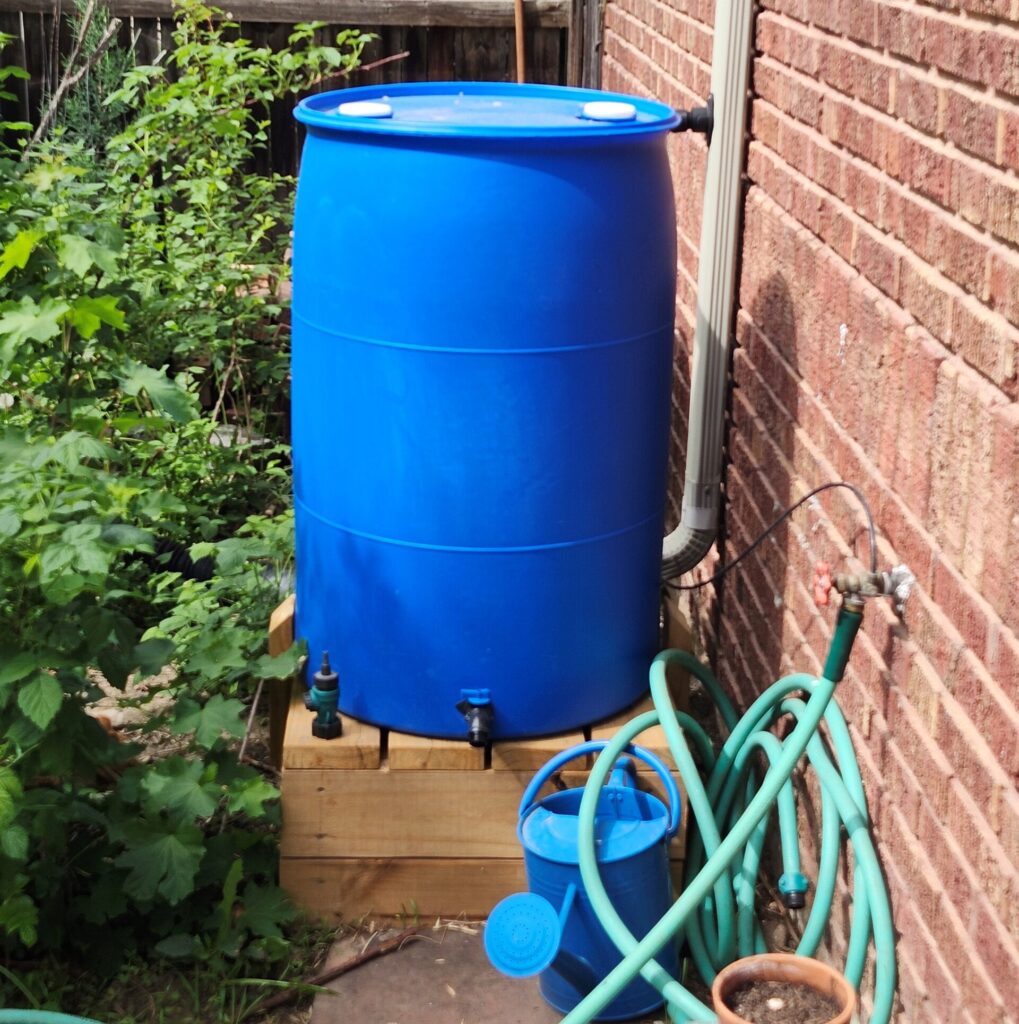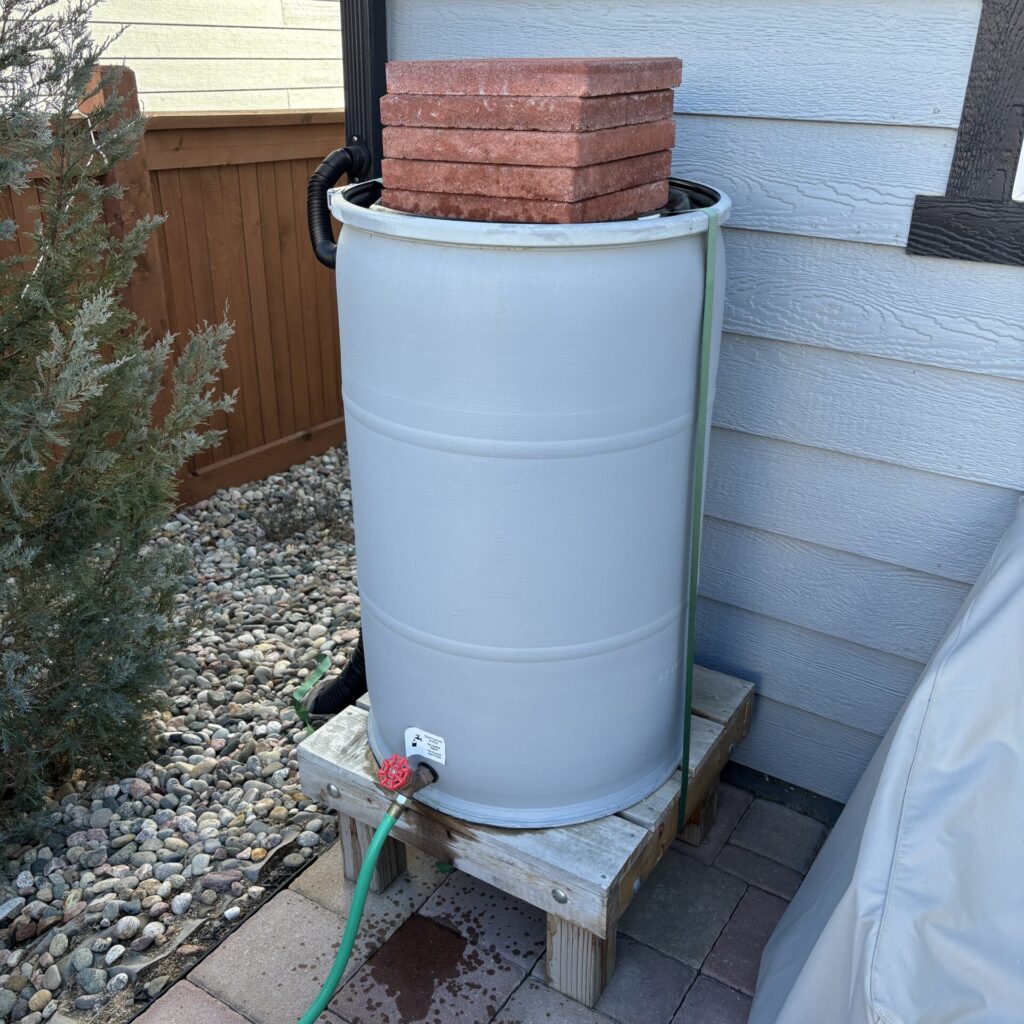Important Reminder: Always wear eye protection and gloves when drilling into metal.
- Place your barrel on the stand with the spigot facing out.
- Measure your downspout – always drill on the 3” side (your downspout could be 2”x3” or 3”x4”).
- Use a level to mark the downspout at the height of the intake hole.
- The tube MUST BE LEVEL with the intake hole to allow water to flow back out the downspout. If the diverter is too high on the downspout, excess water will flow out of the top of your barrel. If the diverter is too low, your barrel will not fill.
- Use the largest hole saw to drill into the 3” side of the downspout. Be careful not to drop the metal cutting into the downspout if your downspout is connected to a pipe that runs underground.
Tip: Use pressure when drilling and make sure you are holding the hole saw straight
Insert the diverter into the downspout:
- Squeeze the sides of the rubber diverter and insert it into the downspout. The cup and arrow should be facing UP to ensure rainwater capture.
- Secure the diverter to the downspout with the two small screws. Insert the fill tube into the diverter and the barrel’s top hole.
- Make sure the diverter is completely flush (no gaps) and completely inserted. You should hear a ‘pop’ when the diverter is inserted completely.
Once the diverter is in place, connect the other side of the hose into it. The hose should now be connecting the downspout to the barrel.
Tip: The ends of your hose might be slightly different sizes.












